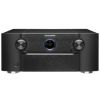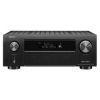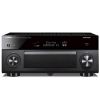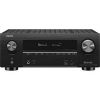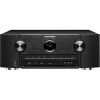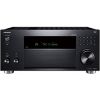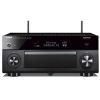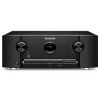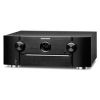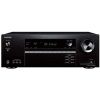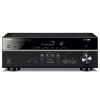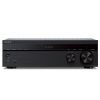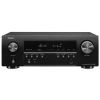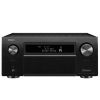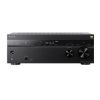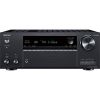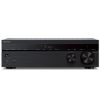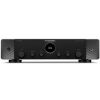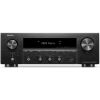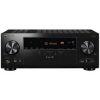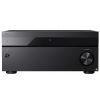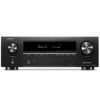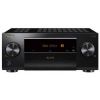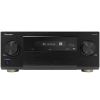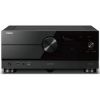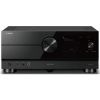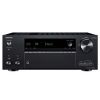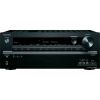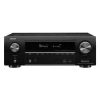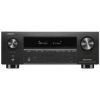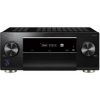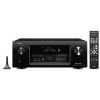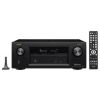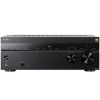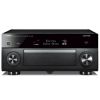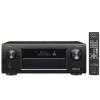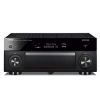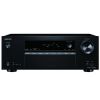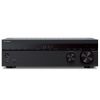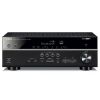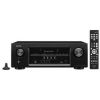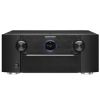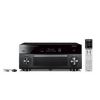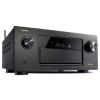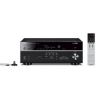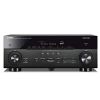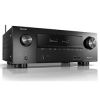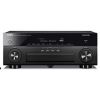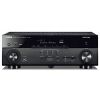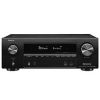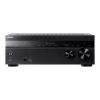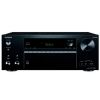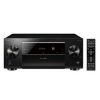-
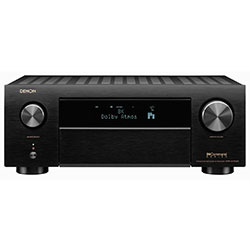
Denon AVR-X4700H
- Denon
- | 1700
- 226
-
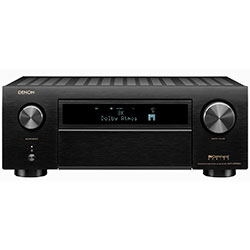
Denon AVR-X6700H
- Denon
- | 2500
- 130
-

Denon AVR-X6500H
- Denon
- | 2200
- 117
-
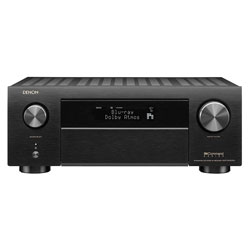
Denon AVR-X4500H
- Denon
- | 1600
- 194
-
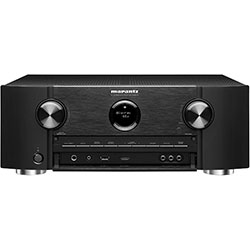
Marantz SR6014
- Marantz
- | 1500
- 30
-

Denon AVR-S540BT
- Denon
- | 400
- 1128
-
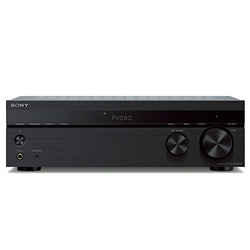
Sony STR-DH190
- Sony
- | 200
- 1970
-
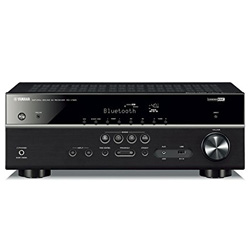
Yamaha RX-V385
- Yamaha
- | 300
- 1015
-
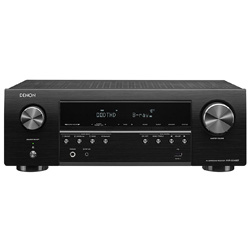
Denon AVR-X540BT
- Denon
- | 300
- 1128
-

Denon AVR-X8500HSP
- Denon
- | 4000
- 6
-
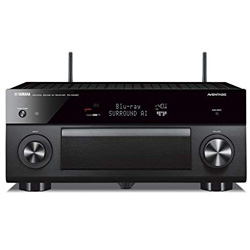
Yamaha AVENTAGE RX-A2080
- Yamaha
- | 1600
- 58
-
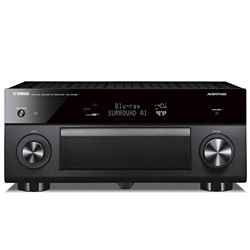
Yamaha AVENTAGE RX-A3080
- Yamaha
- | 2000
- 72
-
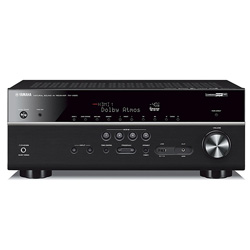
Yamaha RX-V685BL
- Yamaha
- | 600
- 394
-
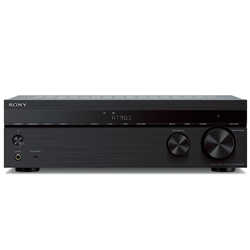
Sony STR-DH790
- Sony
- | 400
- 713
-

Marantz SR8012
- Marantz
- | 3000
- 24
-
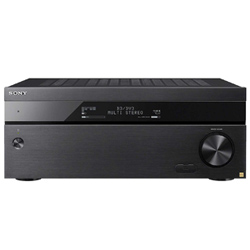
Sony STR-ZA2100ES
- Sony
- | 1400
- 7
-

Yamaha RX-V385BL
- Yamaha
- | 300
- 1164
-
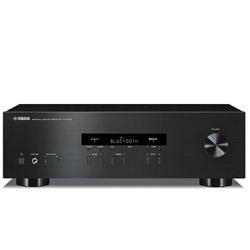
Yamaha R-S202BL
- Yamaha
- | 200
- 2643
-
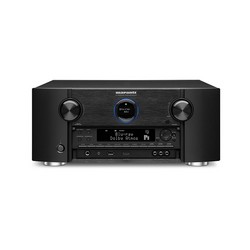
Marantz SR7012
- Marantz
- | 1600
- 60
-
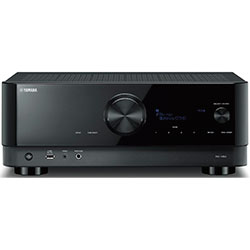
Yamaha RX-V6A
- Yamaha
- | 600
- 15
-
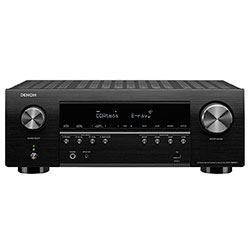
Denon AVR-S960H
- Denon
- | 700
- 60
-
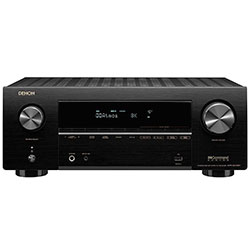
Denon AVR-X2700H
- Denon
- | 900
- 40
-

Denon AVR-X3700H
- Denon
- | 1200
- 250
-

Cambridge Audio AXR100
- Cambridge Audio
- | 500
- 37
-
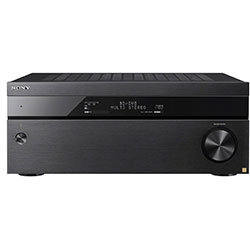
Sony STRZA1100ES
- Sony
- | 1100
- 20
-

Pioneer Elite SC-LX704
- Pioneer
- | 1800
- 5
-
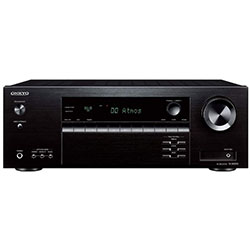
Onkyo TX-SR393
- Onkyo
- | 400
- 46
-
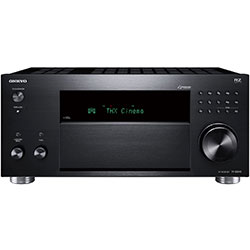
Onkyo TX-RZ840
- Onkyo
- | 1000
- 39
-
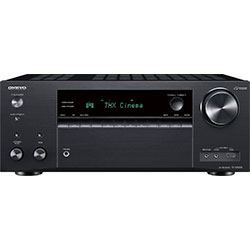
Onkyo TX-NR696
- Onkyo
- | 700
- 88
-
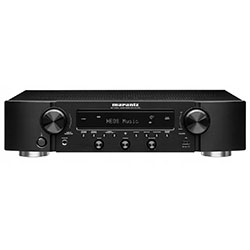
Marantz NR1200
- Marantz
- | 800
- 51
-
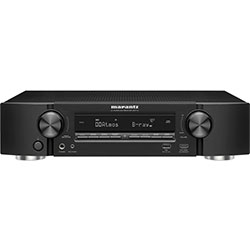
Marantz NR1710
- Marantz
- | 800
- 34
-
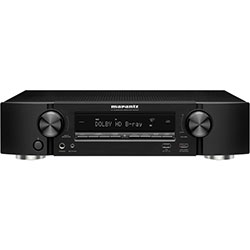
Marantz NR1510
- Marantz
- | 800
- 30
-
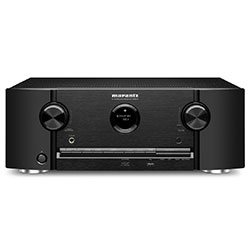
Marantz SR5014
- Marantz
- | 1000
- 22
-
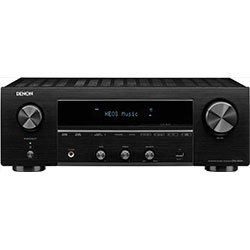
Denon DRA-800H
- Denon
- | 700
- 67
-
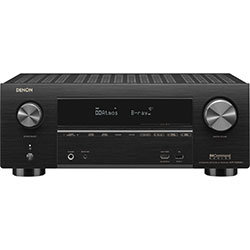
Denon AVR-X3600H
- Denon
- | 1100
- 213
-
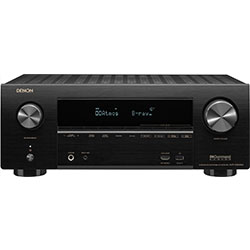
Denon AVR-X2600H
- Denon
- | 800
- 123
-
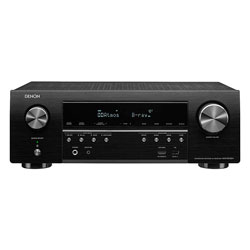
Denon AVR-S750H
- Denon
- | 500
- 201
-
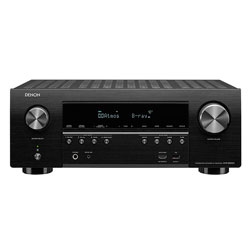
Denon AVR-S950H
- Denon
- | 600
- 141
-
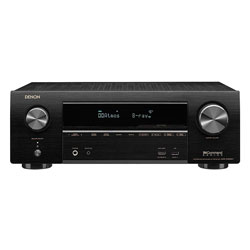
Denon AVR-X1600H
- Denon
- | 600
- 150
-
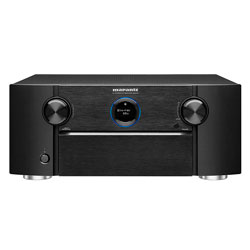
Marantz SR7013
- Marantz
- | 1600
- 10
-
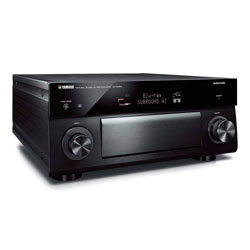
Yamaha CX-A5200
- Yamaha
- | 2700
- 18
-
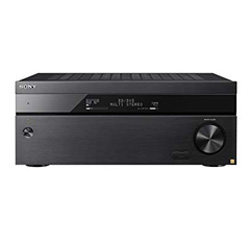
Sony STRZA5000ES
- Sony
- | 2200
- 11
-
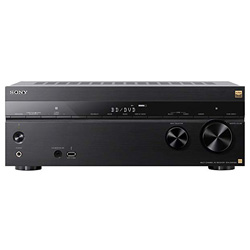
Sony STR-ZA810ES
- Sony
- | 700
- 33
-
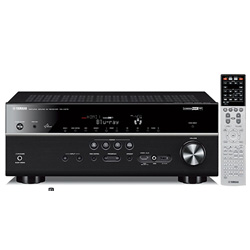
Yamaha RX-V675
- Yamaha
- | 600
- 689
-
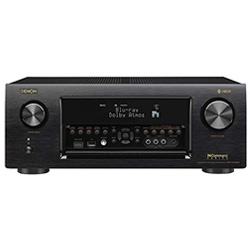
Denon AVR-X4400H
- Denon
- | 1200
- 147
-
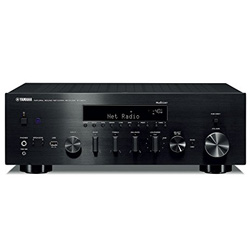
Yamaha R-N803BL
- Yamaha
- | 800
- 61
-

Denon AVR-X1400H
- Denon
- | 600
- 140
-
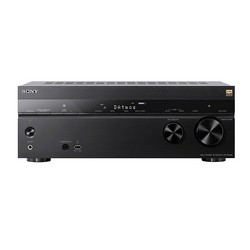
Sony STR-DN1080
- Sony
- | 600
- 778
-
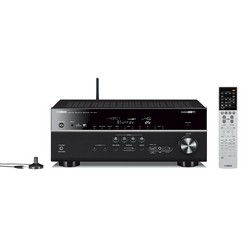 OUR CHOICE
OUR CHOICEYamaha RX-V677
- Yamaha
- | 600
- 580
-
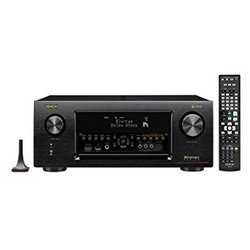 OUR CHOICE
OUR CHOICEDenon AVRX4400H
- Denon
- | 1200
- 147
-
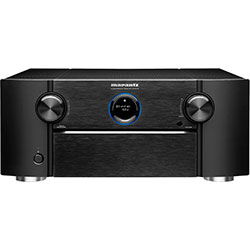
Marantz SR7015
- Marantz
- | 2300
- 4
-
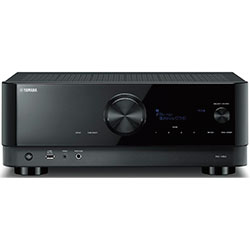
Yamaha RX-V4A
- Yamaha
- | 500
- 6
-
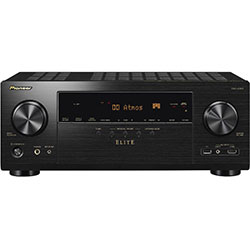
Pioneer Elite VSX-LX304
- Pioneer
- | 800
- 12
-
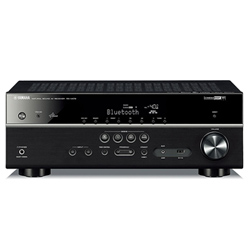
Yamaha RX-V479BL
- Yamaha
- | 500
- 116
-
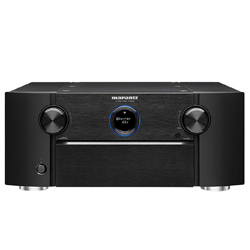
Marantz AV8805
- Marantz
- | 4500
- 10
-
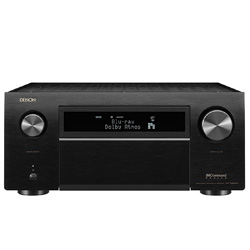
Denon AVR-X8500H
- Denon
- | 4000
- 16
-
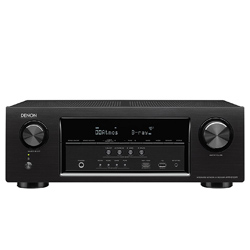
Denon AVR-S720W
- Denon
- | 500
- 185
-
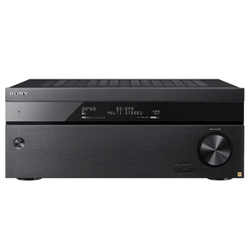
Sony STR-ZA3100ES
- Sony
- | 1700
- 6
-
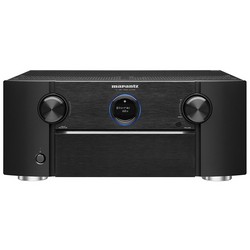
Marantz AV7703
- Marantz
- | 1800
- 28
-
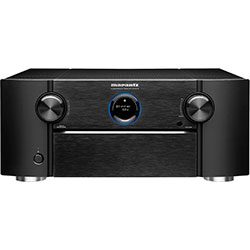
Marantz SR8015
- Marantz
- | 3200
- 3
-

Denon AVR-S970H
- Denon
- | 900
-
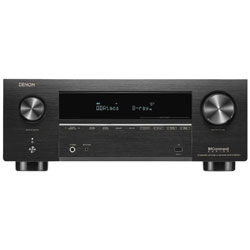
Denon AVR-X3800H
- Denon
- | 1700
-
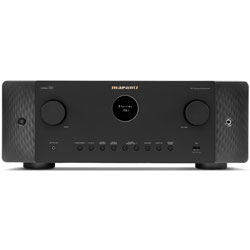
Marantz CINEMA 60
- Marantz
- | 1700
-

Marantz CINEMA 50
- Marantz
- | 2500
-

Marantz CINEMA 40
- Marantz
- | 3500
-
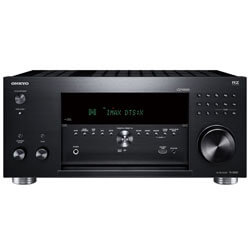
Onkyo TX-RZ50
- Onkyo
- | 1600
-
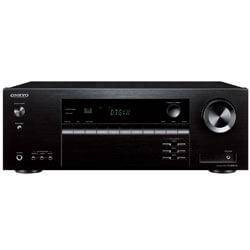
Onkyo TX-NR5100
- Onkyo
- | 500
-
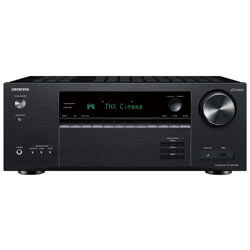
Onkyo TX-NR6100
- Onkyo
- | 800
-
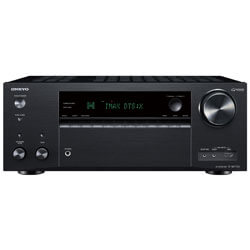
Onkyo TX-NR7100
- Onkyo
- | 1300
-
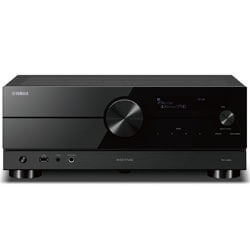
Yamaha RX-A2A
- Yamaha
- | 1000
-
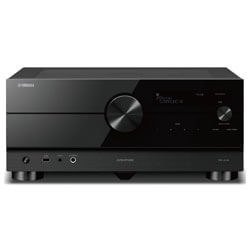
Yamaha RX-A4A
- Yamaha
- | 1300
-
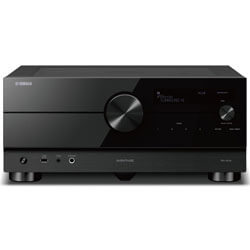
Yamaha RX-A6A
- Yamaha
- | 2300
-
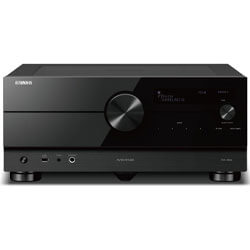
Yamaha RX-A8A
- Yamaha
- | 3000
-
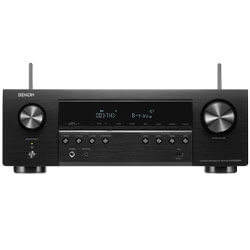
Denon AVR-S660H
- Denon
- | 500
-
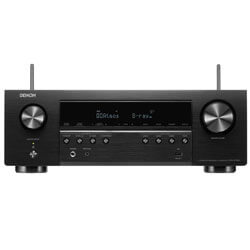
Denon AVR-S760H
- Denon
- | 500
-

Pioneer VSX-935
- Pioneer
- | 700
-

Pioneer Elite VSX-LX105
- Pioneer
- | 900
-
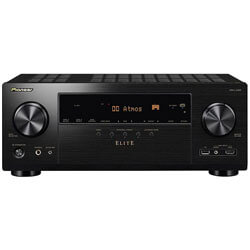
Pioneer Elite VSX-LX305
- Pioneer
- | 1400
-
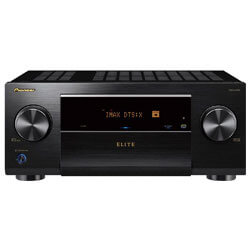
Pioneer Elite VSX-LX505
- Pioneer
- | 1700
-

Marantz SR5015
- Marantz
- | 1500
-
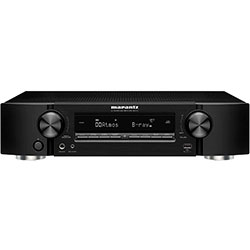
Marantz NR1711
- Marantz
- | 800
-
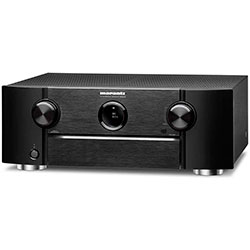
Marantz SR6015
- Marantz
- | 1600
-
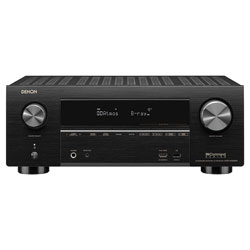
Denon AVR-X3500H
- Denon
- 333
-
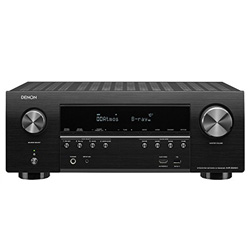
Denon AVR-S940H
- Denon
- 266
-
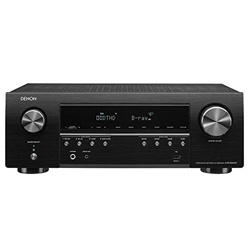
Denon AVR-S640H
- Denon
- 309
-
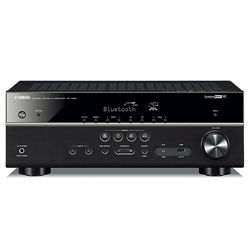
Yamaha RX-V485BL
- Yamaha
- 348
-

Onkyo TX-SR383
- Onkyo
- 265
-
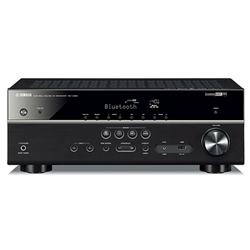
Yamaha RX-V485
- Yamaha
- 348
-
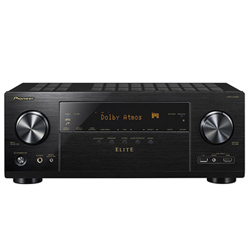
Pioneer VSX-LX303
- Pioneer
- 356
-

Pioneer SX-10AE
- Pioneer
- 528
-
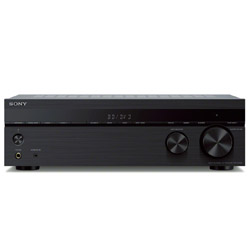
Sony STR-DH590
- Sony
- 1374
-
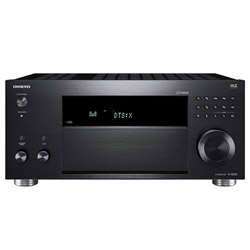
Onkyo TX-RZ820
- Onkyo
- 376
-
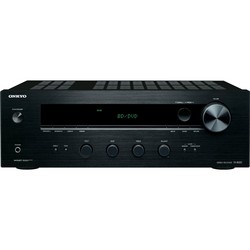
Onkyo TX-8020
- Onkyo
- 781
-
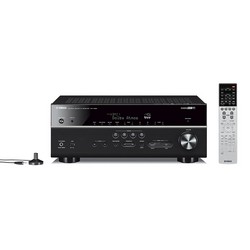
Yamaha RX-V683BL
- Yamaha
- 1148
-
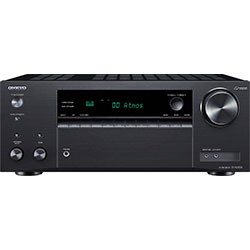
Onkyo TX-NR595
- Onkyo
- 84
-
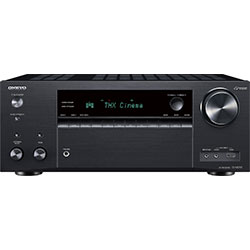
Onkyo TX-NR797
- Onkyo
- 35
-
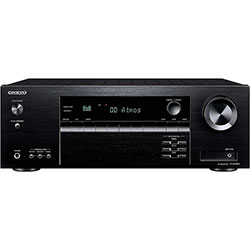
Onkyo TX-SR494
- Onkyo
- 159
-
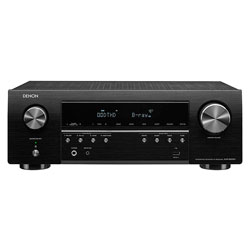
Denon AVR-S650H
- Denon
- 240
-
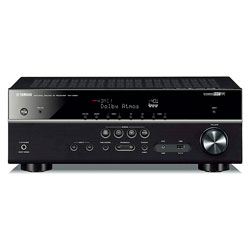
Yamaha RX-V583
- Yamaha
- 102
-
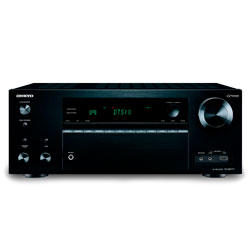
Onkyo TX-NR777
- Onkyo
- 184
-

Yamaha RX-A780
- Yamaha
- 124
-
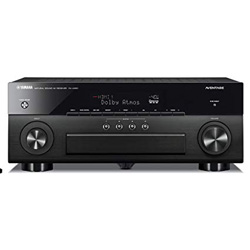
Yamaha RX-A880
- Yamaha
- 80
-
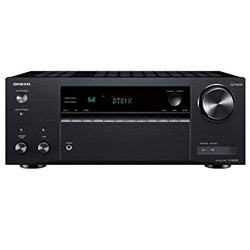
Onkyo TX-NR585
- Onkyo
- 274
-

Pioneer VSX-LX503
- Pioneer
- 171
-

Sony STR-DN1040
- Sony
- 343
-
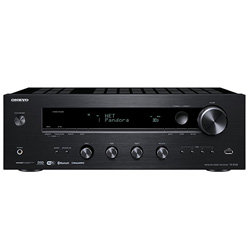
Onkyo TX-8140
- Onkyo
- 193
-
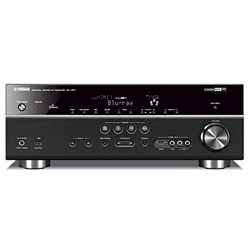
Yamaha RX-V671
- Yamaha
- 265
-
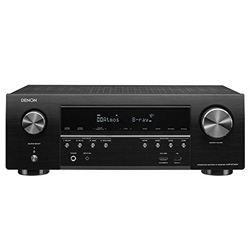
Denon AVR-S740H
- Denon
- 209
-
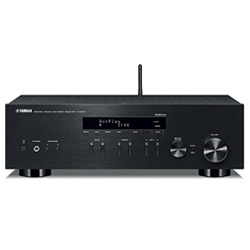
Yamaha R-N303BL
- Yamaha
- 457
-
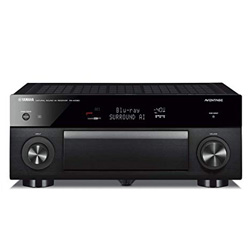
Yamaha AVENTAGE RX-A1080
- Yamaha
- 95
-
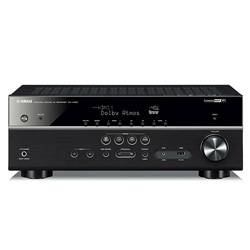
Yamaha RX-V585BL
- Yamaha
- 66
-

Marantz NR1509
- Marantz
- 71
-
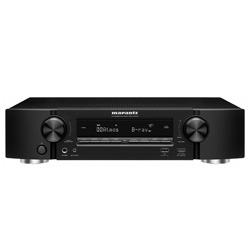
Marantz NR1609
- Marantz
- 105
-
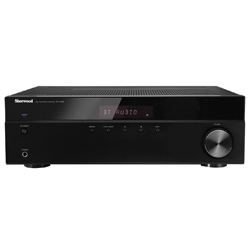
Sherwood RX-4508
- Sherwood
- 577
-
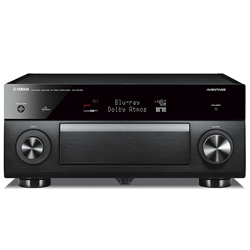
Yamaha CX-A5100
- Yamaha
- 23
-
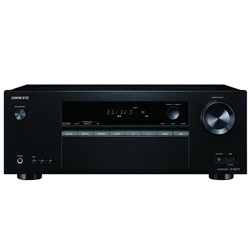
Onkyo TX-SR373
- Onkyo
- 343
-

Denon AVR-X6400H
- Denon
- 61
-
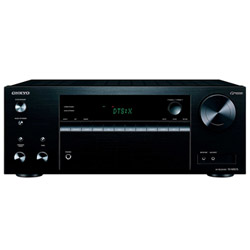
Onkyo TX-NR575
- Onkyo
- 320
-

Denon AVR-S510BT
- Denon
- 593
-
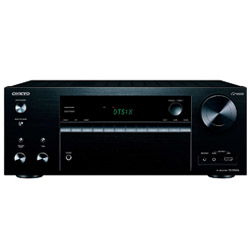
Onkyo TX-NR676
- Onkyo
- 323
-
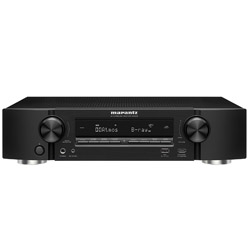
Marantz NR1608
- Marantz
- 80
-
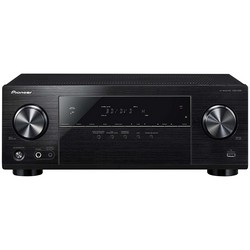
Pioneer VSX-532
- Pioneer
- 298
-
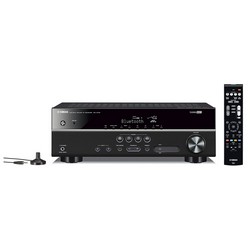
Yamaha RX-V379BL
- Yamaha
- 432
-
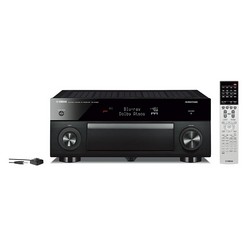
Yamaha RX-A1060BL
- Yamaha
- 40
-

Yamaha RX-V383BL
- Yamaha
- 414
-
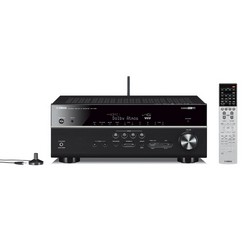
Yamaha RX-V681BL
- Yamaha
- 316
-
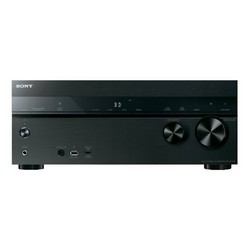
Sony STR-DN1050
- Sony
- 270
-
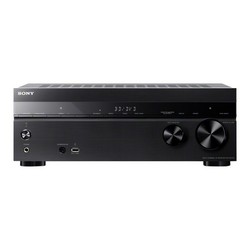
Sony STR-DH770
- Sony
- 395
-
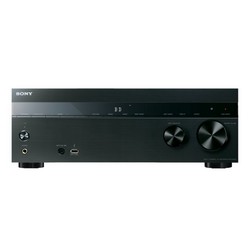
Sony STR DH550
- Sony
- 1218
-
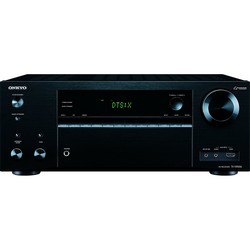
Onkyo TX-NR656
- Onkyo
- 301
-
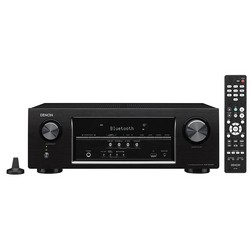 OUR CHOICE
OUR CHOICEDenon AVRS530BT
- Denon
- 374
-
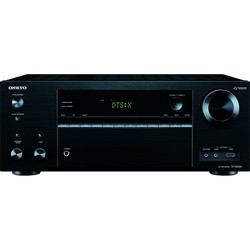 OUR CHOICE
OUR CHOICEOnkyo TX-NR555
- Onkyo
- 301
-
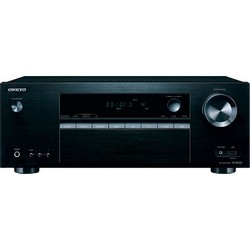 OUR CHOICE
OUR CHOICEOnkyo TX-SR353
- Onkyo
- 343
-
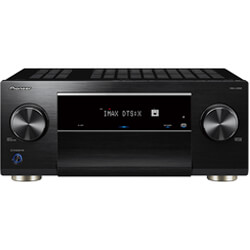
Pioneer VSX-LX505
- Pioneer
-
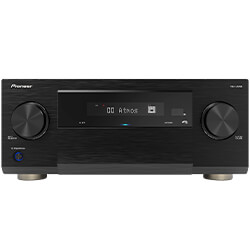
Pioneer VSA-LX805
- Pioneer
-

Onkyo TX-RZ70
- Onkyo
-
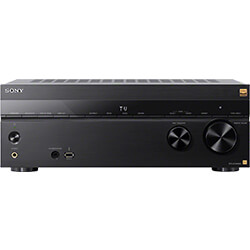
Sony STR-AZ1000ES
- Sony
-
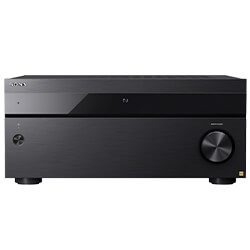
Sony STR-AZ3000ES
- Sony
-
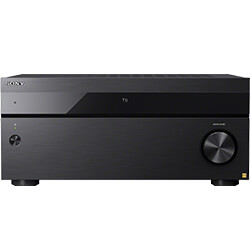
Sony STR-AZ5000ES
- Sony
-
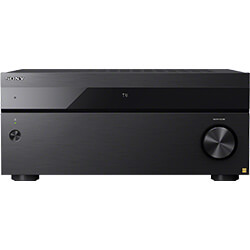
Sony STR-AZ7000ES
- Sony
-
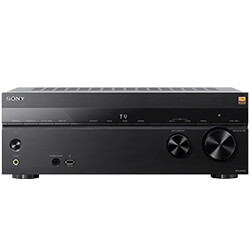
Sony STR-AN1000
- Sony
-
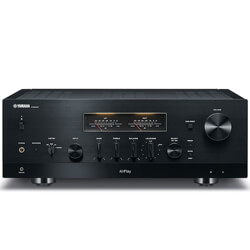
Yamaha R-N2000A
- Yamaha
-
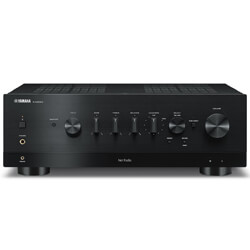
Yamaha R-N1000A
- Yamaha
-
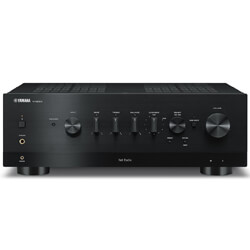
Yamaha R-N800A
- Yamaha
-
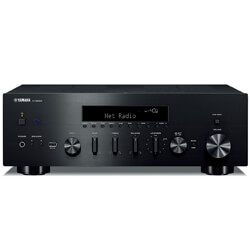
Yamaha R-N600A
- Yamaha
-
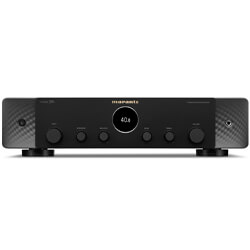
Marantz STEREO 70s
- Marantz
-
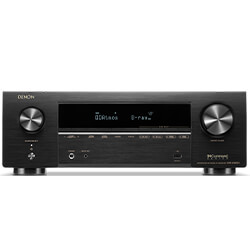
Denon AVR-X1800H
- Denon
-
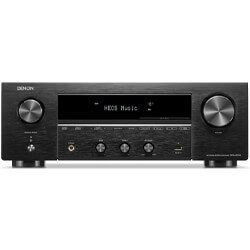
Denon DRA-900H
- Denon
-
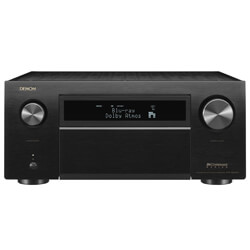
Denon AVR-X8500HA
- Denon
-

Denon AVR-S770H
- Denon
-
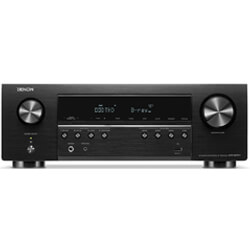
Denon AVR-S670H
- Denon
-
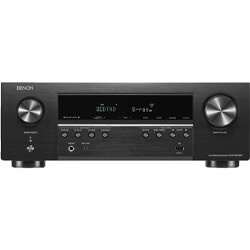
Denon AVR-S570BT
- Denon
-
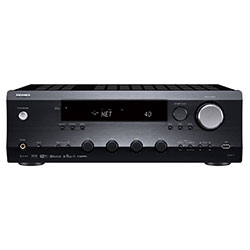
Integra DTM-7
- Integra
- 3
-
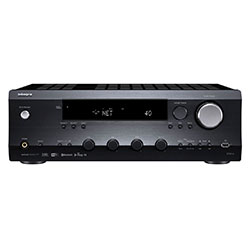
Integra DTM-6
- Integra
- 4
-

Pioneer VSX-LX504
- Pioneer
- 10
-
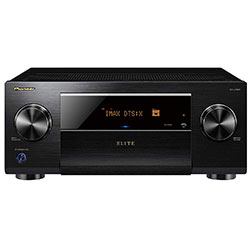
Pioneer Elite SC-LX904
- Pioneer
- 12
-
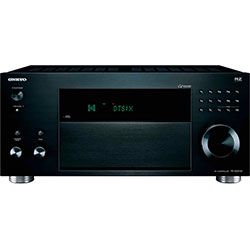
Onkyo PR-RZ5100
- Onkyo
- 14
-

Onkyo TX-RZ740
- Onkyo
- 8
-
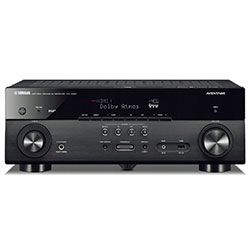
Yamaha AVENTAGE RX-A680
- Yamaha
- 31
-

Yamaha RX-S602
- Yamaha
- 17
-
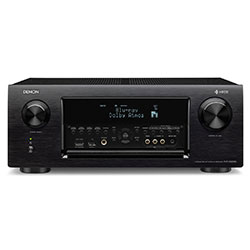
Denon AVRX6300H
- Denon
- 32
-
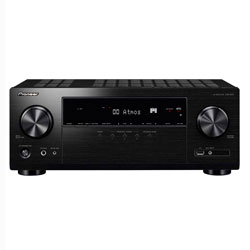
Pioneer VSX-934
- Pioneer
- 64
-

Onkyo TX-RZ620
- Onkyo
- 59
-
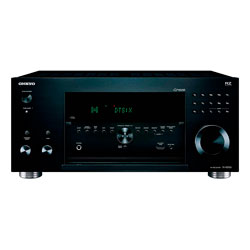
Onkyo TX-RZ920
- Onkyo
- 26
-
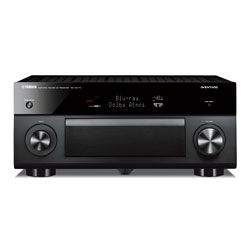
Yamaha RX-A2070
- Yamaha
- 37
-
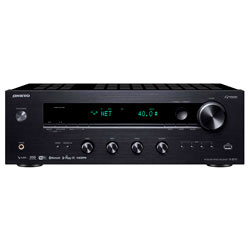
Onkyo TX-8270
- Onkyo
- 120
-
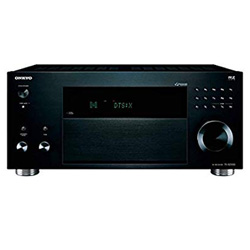
Onkyo TX-RZ3100
- Onkyo
- 20
-
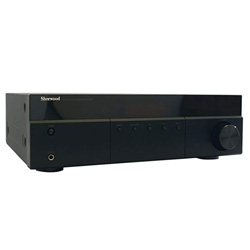
Sherwood RX-4208
- Sherwood
- 203
-
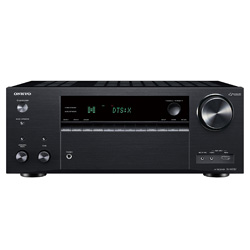
Onkyo TX-NR787
- Onkyo
- 93
-
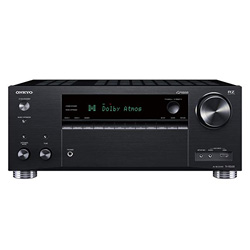
Onkyo TX-RZ630
- Onkyo
- 54
-
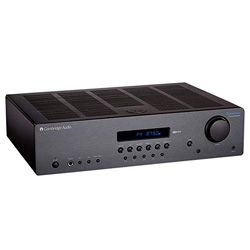
Cambridge Audio Topaz SR10
- Cambridge Audio
- 17
-
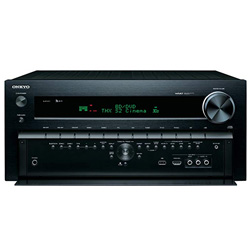
Onkyo TX-NR828
- Onkyo
- 129
-
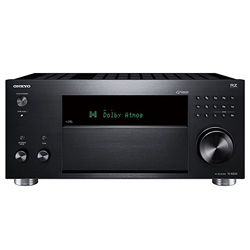
Onkyo TX-RZ830
- Onkyo
- 128
-
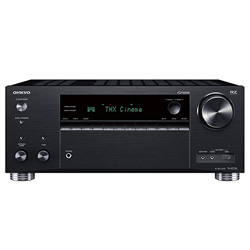
Onkyo TX-RZ730
- Onkyo
- 99
-
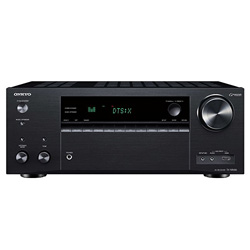
Onkyo TX-NR686
- Onkyo
- 152
-
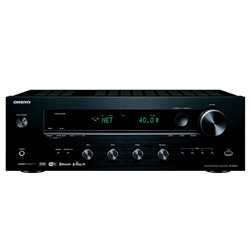
Onkyo TX-8260
- Onkyo
- 50
-

Yamaha TSR-5810
- Yamaha
- 11
-
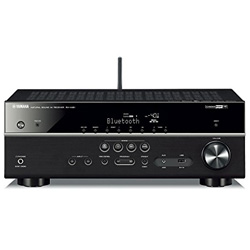
Yamaha RX-V481BL
- Yamaha
- 98
-
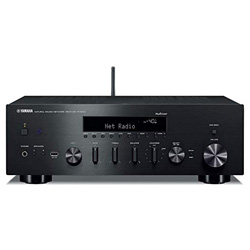
Yamaha R-N602BL
- Yamaha
-

Yamaha RX-V475
- Yamaha
- 217
-
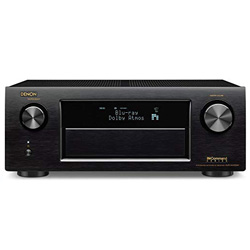
Denon AVR-X4100W
- Denon
- 54
-
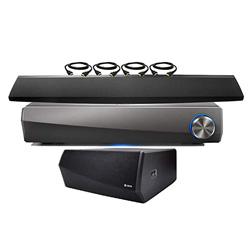
Denon HEOS AVR
- Denon
- 15
-
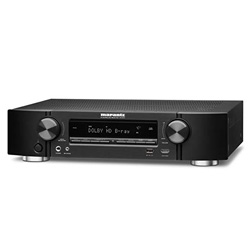
Marantz NR1504
- Marantz
- 110
-

Pioneer VSX-832
- Pioneer
- 184
-
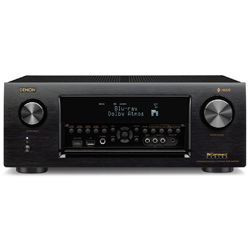
Denon AVRX4300H
- Denon
- 138
-
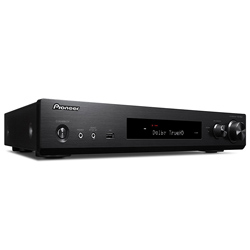
Pioneer VSX-S520
- Pioneer
- 92
-
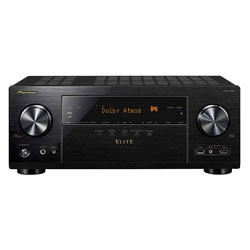
Pioneer VSX-LX301
- Pioneer
- 97
-
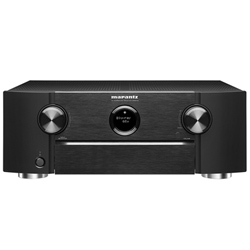
Marantz SR6012
- Marantz
- 34
-

Marantz SR6010
- Marantz
- 36
-
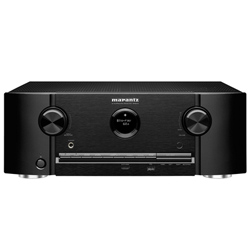
Marantz SR5010
- Marantz
- 63
-

Onkyo TX-RZ720
- Onkyo
- 79
-
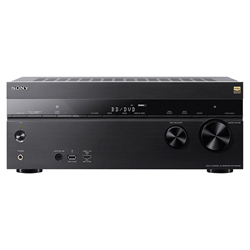
Sony STR-DN1060
- Sony
- 168
-
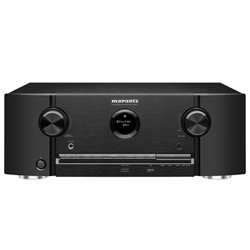
Marantz SR5011
- Marantz
- 39
-
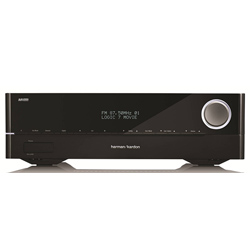
Harman Kardon AVR 1610
- Harman Kardon
- 64
-
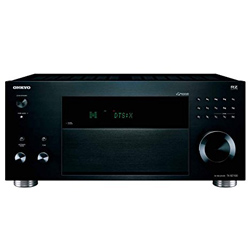
Onkyo TX-RZ1100
- Onkyo
- 17
-
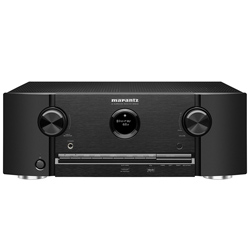
Marantz SR5012
- Marantz
- 48
-
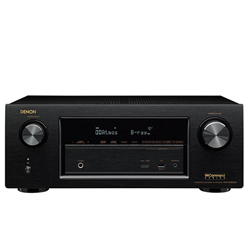
Denon AVR-X3200W
- Denon
- 98
-
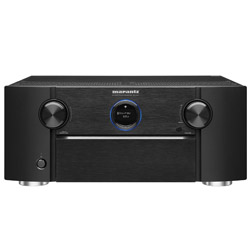
Marantz SR7011
- Marantz
- 51
-
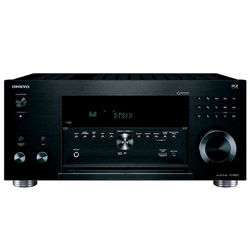
Onkyo TX-RZ810
- Onkyo
- 181
-
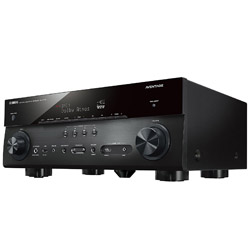
Yamaha RX-A770BL
- Yamaha
- 48
-
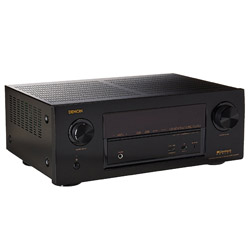
Denon AVR-X2300W
- Denon
- 175
-
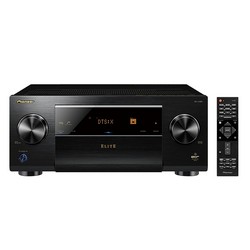
Pioneer SC-LX901
- Pioneer
- 90
-
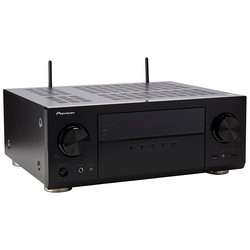
Pioneer VSX-1131
- Pioneer
- 237
-
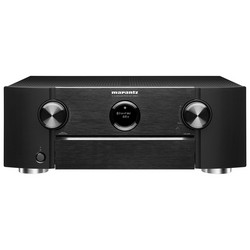
Marantz SR6011
- Marantz
- 28
-
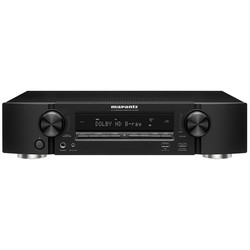
Marantz NR1508
- Marantz
- 48
-

Yamaha RX-V483BL
- Yamaha
- 214
-

Onkyo TX-NR757
- Onkyo
- 98
-
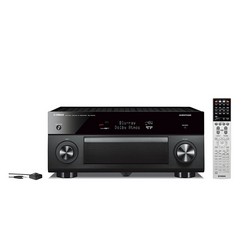
Yamaha RX-A3070BL
- Yamaha
- 53
-
 OUR CHOICE
OUR CHOICEYamaha RX-V581
- Yamaha
- 83
-
 OUR CHOICE
OUR CHOICEDenon AVR-S930H
- Denon
- 187
-
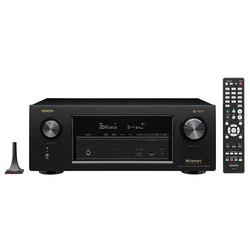 OUR CHOICE
OUR CHOICEDenon AVR-X2400H
- Denon
- 116
-
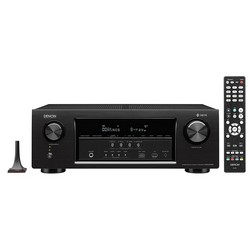 OUR CHOICE
OUR CHOICEDenon AVRS730H
- Denon
- 169
-
 OUR CHOICE
OUR CHOICEOnkyo TX-SR444
- Onkyo
- 65
-
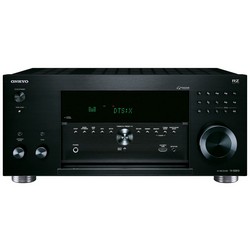 OUR CHOICE
OUR CHOICEOnkyo TX-RZ710
- Onkyo
- 75
-
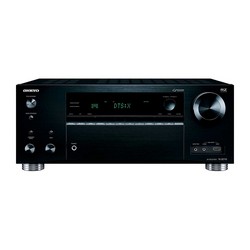 OUR CHOICE
OUR CHOICEPioneer SC-LX801
- Pioneer
- 110
-
 OLD MODEL
OLD MODELDenon AVR-X4700H
- Denon
- 226
-
 OLD MODEL
OLD MODELDenon AVR-X6700H
- Denon
- 130
-
 OLD MODEL
OLD MODELDenon AVR-X6500H
- Denon
- 117
-
 OLD MODEL
OLD MODELDenon AVR-X4500H
- Denon
- 194
-
 OLD MODEL
OLD MODELMarantz SR6014
- Marantz
- 30
-
 OLD MODEL
OLD MODELDenon AVR-S540BT
- Denon
- 1128
-
 OLD MODEL
OLD MODELSony STR-DH190
- Sony
- 1970
-
 OLD MODEL
OLD MODELYamaha RX-V385
- Yamaha
- 1015
-
 OLD MODEL
OLD MODELDenon AVR-X540BT
- Denon
- 1128
-
 OLD MODEL
OLD MODELDenon AVR-X8500HSP
- Denon
- 6
-
 OLD MODEL
OLD MODELYamaha AVENTAGE RX-A2080
- Yamaha
- 58
-
 OLD MODEL
OLD MODELYamaha AVENTAGE RX-A3080
- Yamaha
- 72
-
 OLD MODEL
OLD MODELYamaha RX-V685BL
- Yamaha
- 394
-
 OLD MODEL
OLD MODELSony STR-DH790
- Sony
- 713
-
 OLD MODEL
OLD MODELMarantz SR8012
- Marantz
- 24
-
 OLD MODEL
OLD MODELSony STR-ZA2100ES
- Sony
- 7
-
 OLD MODEL
OLD MODELYamaha RX-V385BL
- Yamaha
- 1164
-
 OLD MODEL
OLD MODELYamaha R-S202BL
- Yamaha
- 2643
-
 OLD MODEL
OLD MODELMarantz SR7012
- Marantz
- 60
-
 OLD MODEL
OLD MODELYamaha RX-V6A
- Yamaha
- 15
-
 OLD MODEL
OLD MODELDenon AVR-S960H
- Denon
- 60
-
 OLD MODEL
OLD MODELDenon AVR-X2700H
- Denon
- 40
-
 OLD MODEL
OLD MODELDenon AVR-X3700H
- Denon
- 250
-
 OLD MODEL
OLD MODELCambridge Audio AXR100
- Cambridge Audio
- 37
-
 OLD MODEL
OLD MODELSony STRZA1100ES
- Sony
- 20
-
 OLD MODEL
OLD MODELPioneer Elite SC-LX704
- Pioneer
- 5
-
 OLD MODEL
OLD MODELOnkyo TX-SR393
- Onkyo
- 46
-
 OLD MODEL
OLD MODELOnkyo TX-RZ840
- Onkyo
- 39
-
 OLD MODEL
OLD MODELOnkyo TX-NR696
- Onkyo
- 88
-
 OLD MODEL
OLD MODELMarantz NR1200
- Marantz
- 51
-
 OLD MODEL
OLD MODELMarantz NR1710
- Marantz
- 34
-
 OLD MODEL
OLD MODELMarantz NR1510
- Marantz
- 30
-
 OLD MODEL
OLD MODELMarantz SR5014
- Marantz
- 22
-
 OLD MODEL
OLD MODELDenon DRA-800H
- Denon
- 67
-
 OLD MODEL
OLD MODELDenon AVR-X3600H
- Denon
- 213
-
 OLD MODEL
OLD MODELDenon AVR-X2600H
- Denon
- 123
-
 OLD MODEL
OLD MODELDenon AVR-S750H
- Denon
- 201
-
 OLD MODEL
OLD MODELDenon AVR-S950H
- Denon
- 141
-
 OLD MODEL
OLD MODELDenon AVR-X1600H
- Denon
- 150
-
 OLD MODEL
OLD MODELMarantz SR7013
- Marantz
- 10
-
 OLD MODEL
OLD MODELYamaha CX-A5200
- Yamaha
- 18
-
 OLD MODEL
OLD MODELSony STRZA5000ES
- Sony
- 11
-
 OLD MODEL
OLD MODELSony STR-ZA810ES
- Sony
- 33
-
 OLD MODEL
OLD MODELYamaha RX-V675
- Yamaha
- 689
-
 OLD MODEL
OLD MODELDenon AVR-X4400H
- Denon
- 147
-
 OLD MODEL
OLD MODELYamaha R-N803BL
- Yamaha
- 61
-
 OLD MODEL
OLD MODELDenon AVR-X1400H
- Denon
- 140
-
 OLD MODEL
OLD MODELSony STR-DN1080
- Sony
- 778
-
 OLD MODEL
OLD MODELYamaha RX-V677
- Yamaha
- 580
-
 OLD MODEL
OLD MODELDenon AVRX4400H
- Denon
- 147
-
 OLD MODEL
OLD MODELMarantz SR7015
- Marantz
- 4
-
 OLD MODEL
OLD MODELYamaha RX-V4A
- Yamaha
- 6
-
 OLD MODEL
OLD MODELPioneer Elite VSX-LX304
- Pioneer
- 12
-
 OLD MODEL
OLD MODELYamaha RX-V479BL
- Yamaha
- 116
-
 OLD MODEL
OLD MODELMarantz AV8805
- Marantz
- 10
-
 OLD MODEL
OLD MODELDenon AVR-X8500H
- Denon
- 16
-
 OLD MODEL
OLD MODELDenon AVR-S720W
- Denon
- 185
-
 OLD MODEL
OLD MODELSony STR-ZA3100ES
- Sony
- 6
-
 OLD MODEL
OLD MODELMarantz AV7703
- Marantz
- 28
-
 OLD MODEL
OLD MODELMarantz SR8015
- Marantz
- 3
-
 OLD MODEL
OLD MODELDenon AVR-S970H
- Denon
-
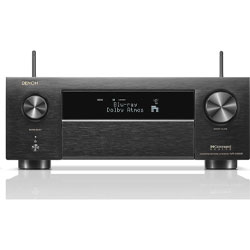 OLD MODEL
OLD MODELDenon AVR-X4800H
- Denon
-
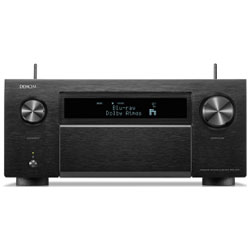 OLD MODEL
OLD MODELDenon AVR-A1H
- Denon
-
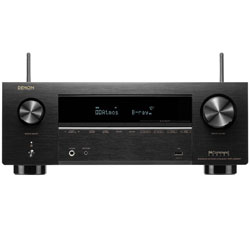 OLD MODEL
OLD MODELDenon AVR-X2800H
- Denon
-
 OLD MODEL
OLD MODELDenon AVR-X3800H
- Denon
-
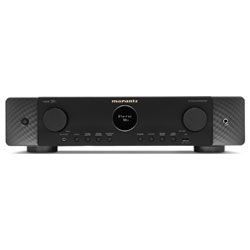 OLD MODEL
OLD MODELMarantz CINEMA 70s
- Marantz
-
 OLD MODEL
OLD MODELMarantz CINEMA 60
- Marantz
-
 OLD MODEL
OLD MODELMarantz CINEMA 50
- Marantz
-
 OLD MODEL
OLD MODELMarantz CINEMA 40
- Marantz
-
 OLD MODEL
OLD MODELOnkyo TX-RZ50
- Onkyo
-
 OLD MODEL
OLD MODELOnkyo TX-NR5100
- Onkyo
-
 OLD MODEL
OLD MODELOnkyo TX-NR6100
- Onkyo
-
 OLD MODEL
OLD MODELOnkyo TX-NR7100
- Onkyo
-
 OLD MODEL
OLD MODELYamaha RX-A2A
- Yamaha
-
 OLD MODEL
OLD MODELYamaha RX-A4A
- Yamaha
-
 OLD MODEL
OLD MODELYamaha RX-A6A
- Yamaha
-
 OLD MODEL
OLD MODELYamaha RX-A8A
- Yamaha
-
 OLD MODEL
OLD MODELDenon AVR-S660H
- Denon
-
 OLD MODEL
OLD MODELDenon AVR-S760H
- Denon
-
 OLD MODEL
OLD MODELPioneer VSX-935
- Pioneer
-
 OLD MODEL
OLD MODELPioneer Elite VSX-LX105
- Pioneer
-
 OLD MODEL
OLD MODELPioneer Elite VSX-LX305
- Pioneer
-
 OLD MODEL
OLD MODELPioneer Elite VSX-LX505
- Pioneer
-
 OLD MODEL
OLD MODELMarantz SR5015
- Marantz
-
 OLD MODEL
OLD MODELMarantz NR1711
- Marantz
-
 OLD MODEL
OLD MODELMarantz SR6015
- Marantz
-
 OLD MODEL
OLD MODELDenon AVR-X3500H
- Denon
- 333
-
 OLD MODEL
OLD MODELDenon AVR-S940H
- Denon
- 266
-
 OLD MODEL
OLD MODELDenon AVR-S640H
- Denon
- 309
-
 OLD MODEL
OLD MODELYamaha RX-V485BL
- Yamaha
- 348
-
 OLD MODEL
OLD MODELOnkyo TX-SR383
- Onkyo
- 265
-
 OLD MODEL
OLD MODELYamaha RX-V485
- Yamaha
- 348
-
 OLD MODEL
OLD MODELPioneer VSX-LX303
- Pioneer
- 356
-
 OLD MODEL
OLD MODELPioneer SX-10AE
- Pioneer
- 528
-
 OLD MODEL
OLD MODELSony STR-DH590
- Sony
- 1374
-
 OLD MODEL
OLD MODELOnkyo TX-RZ820
- Onkyo
- 376
-
 OLD MODEL
OLD MODELOnkyo TX-8020
- Onkyo
- 781
-
 OLD MODEL
OLD MODELYamaha RX-V683BL
- Yamaha
- 1148
-
 OLD MODEL
OLD MODELOnkyo TX-NR595
- Onkyo
- 84
-
 OLD MODEL
OLD MODELOnkyo TX-NR797
- Onkyo
- 35
-
 OLD MODEL
OLD MODELOnkyo TX-SR494
- Onkyo
- 159
-
 OLD MODEL
OLD MODELDenon AVR-S650H
- Denon
- 240
-
 OLD MODEL
OLD MODELYamaha RX-V583
- Yamaha
- 102
-
 OLD MODEL
OLD MODELOnkyo TX-NR777
- Onkyo
- 184
-
 OLD MODEL
OLD MODELYamaha RX-A780
- Yamaha
- 124
-
 OLD MODEL
OLD MODELYamaha RX-A880
- Yamaha
- 80
-
 OLD MODEL
OLD MODELOnkyo TX-NR585
- Onkyo
- 274
-
 OLD MODEL
OLD MODELPioneer VSX-LX503
- Pioneer
- 171
-
 OLD MODEL
OLD MODELSony STR-DN1040
- Sony
- 343
-
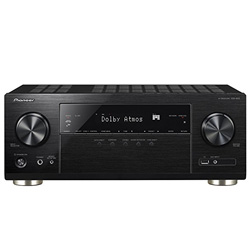 OLD MODEL
OLD MODELPioneer VSX-933
- Pioneer
- 15
-
 OLD MODEL
OLD MODELOnkyo TX-8140
- Onkyo
- 193
-
 OLD MODEL
OLD MODELMarantz SR5013
- Marantz
- 9
-
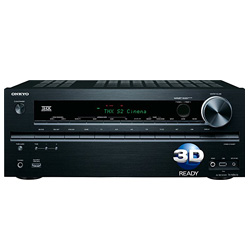 OLD MODEL
OLD MODELOnkyo TX-NR616
- Onkyo
- 777
-
 OLD MODEL
OLD MODELOnkyo TX-NR626
- Onkyo
- 781
-
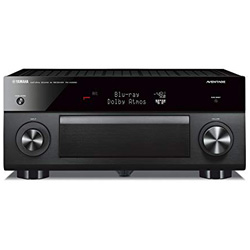 OLD MODEL
OLD MODELYamaha RX-A3060BL
- Yamaha
- 737
-
 OLD MODEL
OLD MODELYamaha RX-V671
- Yamaha
- 265
-
 OLD MODEL
OLD MODELDenon AVR-S740H
- Denon
- 209
-
 OLD MODEL
OLD MODELYamaha R-N303BL
- Yamaha
- 457
-
 OLD MODEL
OLD MODELYamaha AVENTAGE RX-A1080
- Yamaha
- 95
-
 OLD MODEL
OLD MODELYamaha RX-V585BL
- Yamaha
- 66
-
 OLD MODEL
OLD MODELMarantz NR1509
- Marantz
- 71
-
 OLD MODEL
OLD MODELMarantz NR1609
- Marantz
- 105
-
 OLD MODEL
OLD MODELSherwood RX-4508
- Sherwood
- 577
-
 OLD MODEL
OLD MODELYamaha CX-A5100
- Yamaha
- 23
-
 OLD MODEL
OLD MODELOnkyo TX-SR373
- Onkyo
- 343
-
 OLD MODEL
OLD MODELDenon AVR-X6400H
- Denon
- 61
-
 OLD MODEL
OLD MODELOnkyo TX-NR575
- Onkyo
- 320
-
 OLD MODEL
OLD MODELDenon AVR-S510BT
- Denon
- 593
-
 OLD MODEL
OLD MODELOnkyo TX-NR676
- Onkyo
- 323
-
 OLD MODEL
OLD MODELMarantz NR1608
- Marantz
- 80
-
 OLD MODEL
OLD MODELPioneer VSX-532
- Pioneer
- 298
-
 OLD MODEL
OLD MODELYamaha RX-V379BL
- Yamaha
- 432
-
 OLD MODEL
OLD MODELYamaha RX-A1060BL
- Yamaha
- 40
-
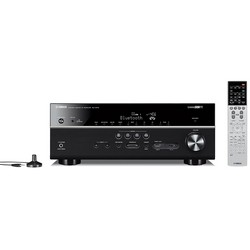 OLD MODEL
OLD MODELYamaha RX-V679BL
- Yamaha
- 493
-
 OLD MODEL
OLD MODELYamaha RX-V383BL
- Yamaha
- 414
-
 OLD MODEL
OLD MODELYamaha RX-V681BL
- Yamaha
- 316
-
 OLD MODEL
OLD MODELSony STR-DN1050
- Sony
- 270
-
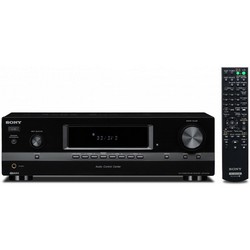 OLD MODEL
OLD MODELSony STR-DH130
- Sony
- 999
-
 OLD MODEL
OLD MODELSony STR-DH770
- Sony
- 395
-
 OLD MODEL
OLD MODELSony STR DH550
- Sony
- 1218
-
 OLD MODEL
OLD MODELOnkyo TX-NR656
- Onkyo
- 301
-
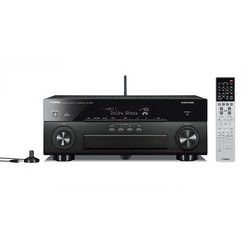 OLD MODEL
OLD MODELYamaha RX-A850
- Yamaha
- 28
-
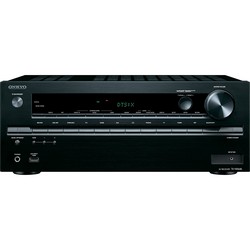 OLD MODEL
OLD MODELOnkyo TX-NR646
- Onkyo
- 403
-
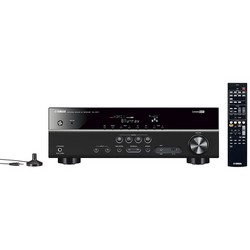 OLD MODEL
OLD MODELYamaha RX-V377
- Yamaha
- 692
-
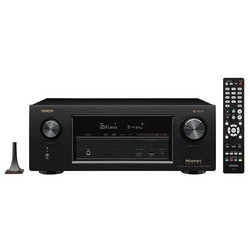 OLD MODEL
OLD MODELDenon AVR-X3400H
- Denon
- 78
-
 OLD MODEL
OLD MODELDenon AVRS530BT
- Denon
- 374
-
 OLD MODEL
OLD MODELOnkyo TX-NR555
- Onkyo
- 301
-
 OLD MODEL
OLD MODELOnkyo TX-SR353
- Onkyo
- 343
-
 OLD MODEL
OLD MODELPioneer VSX-LX505
- Pioneer
-
 OLD MODEL
OLD MODELPioneer VSA-LX805
- Pioneer
-
 OLD MODEL
OLD MODELOnkyo TX-RZ70
- Onkyo
-
 OLD MODEL
OLD MODELSony STR-AZ1000ES
- Sony
-
 OLD MODEL
OLD MODELSony STR-AZ3000ES
- Sony
-
 OLD MODEL
OLD MODELSony STR-AZ5000ES
- Sony
-
 OLD MODEL
OLD MODELSony STR-AZ7000ES
- Sony
-
 OLD MODEL
OLD MODELSony STR-AN1000
- Sony
-
 OLD MODEL
OLD MODELYamaha R-N2000A
- Yamaha
-
 OLD MODEL
OLD MODELYamaha R-N1000A
- Yamaha
-
 OLD MODEL
OLD MODELYamaha R-N800A
- Yamaha
-
 OLD MODEL
OLD MODELYamaha R-N600A
- Yamaha
-
 OLD MODEL
OLD MODELMarantz STEREO 70s
- Marantz
-
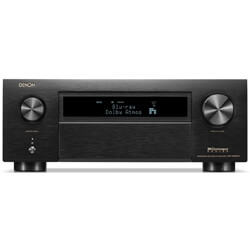 OLD MODEL
OLD MODELDenon AVR-X6800H
- Denon
-
 OLD MODEL
OLD MODELDenon AVR-X1800H
- Denon
-
 OLD MODEL
OLD MODELDenon DRA-900H
- Denon
-
 OLD MODEL
OLD MODELDenon AVR-X8500HA
- Denon
-
 OLD MODEL
OLD MODELDenon AVR-S770H
- Denon
-
 OLD MODEL
OLD MODELDenon AVR-S670H
- Denon
-
 OLD MODEL
OLD MODELDenon AVR-S570BT
- Denon
-
 OLD MODEL
OLD MODELIntegra DTM-7
- Integra
- 3
-
 OLD MODEL
OLD MODELIntegra DTM-6
- Integra
- 4
-
 OLD MODEL
OLD MODELPioneer VSX-LX504
- Pioneer
- 10
-
 OLD MODEL
OLD MODELPioneer Elite SC-LX904
- Pioneer
- 12
-
 OLD MODEL
OLD MODELOnkyo PR-RZ5100
- Onkyo
- 14
-
 OLD MODEL
OLD MODELOnkyo TX-RZ740
- Onkyo
- 8
-
 OLD MODEL
OLD MODELYamaha AVENTAGE RX-A680
- Yamaha
- 31
-
 OLD MODEL
OLD MODELYamaha RX-S602
- Yamaha
- 17
-
 OLD MODEL
OLD MODELDenon AVRX6300H
- Denon
- 32
-
 OLD MODEL
OLD MODELPioneer VSX-934
- Pioneer
- 64
-
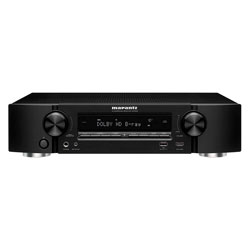 OLD MODEL
OLD MODELMarantz NR1506
- Marantz
- 59
-
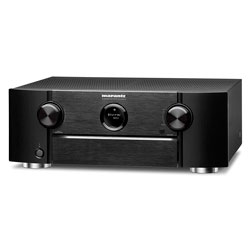 OLD MODEL
OLD MODELMarantz SR6013
- Marantz
- 11
-
 OLD MODEL
OLD MODELOnkyo TX-RZ620
- Onkyo
- 59
-
 OLD MODEL
OLD MODELOnkyo TX-RZ920
- Onkyo
- 26
-
 OLD MODEL
OLD MODELYamaha RX-A2070
- Yamaha
- 37
-
 OLD MODEL
OLD MODELOnkyo TX-8270
- Onkyo
- 120
-
 OLD MODEL
OLD MODELOnkyo TX-RZ900
- Onkyo
- 69
-
 OLD MODEL
OLD MODELOnkyo TX-RZ3100
- Onkyo
- 20
-
 OLD MODEL
OLD MODELSherwood RX-4208
- Sherwood
- 203
-
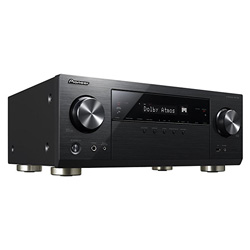 OLD MODEL
OLD MODELPioneer VSX-932
- Pioneer
- 13
-
 OLD MODEL
OLD MODELOnkyo TX-NR787
- Onkyo
- 93
-
 OLD MODEL
OLD MODELOnkyo TX-RZ630
- Onkyo
- 54
-
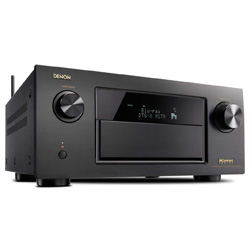 OLD MODEL
OLD MODELDenon AVR-X7200WA
- Denon
- 33
-
 OLD MODEL
OLD MODELCambridge Audio Topaz SR10
- Cambridge Audio
- 17
-
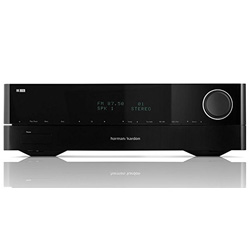 OLD MODEL
OLD MODELHarman Kardon HK 3700
- Harman Kardon
- 49
-
 OLD MODEL
OLD MODELOnkyo TX-NR828
- Onkyo
- 129
-
 OLD MODEL
OLD MODELOnkyo TX-RZ830
- Onkyo
- 128
-
 OLD MODEL
OLD MODELOnkyo TX-RZ730
- Onkyo
- 99
-
 OLD MODEL
OLD MODELOnkyo TX-NR686
- Onkyo
- 152
-
 OLD MODEL
OLD MODELOnkyo TX-8260
- Onkyo
- 50
-
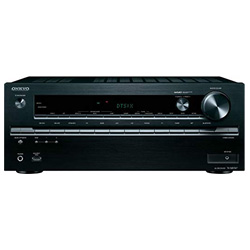 OLD MODEL
OLD MODELOnkyo TX-NR747
- Onkyo
- 113
-
 OLD MODEL
OLD MODELYamaha TSR-5810
- Yamaha
- 11
-
 OLD MODEL
OLD MODELYamaha RX-V481BL
- Yamaha
- 98
-
 OLD MODEL
OLD MODELYamaha R-N602BL
- Yamaha
-
 OLD MODEL
OLD MODELYamaha RX-V475
- Yamaha
- 217
-
 OLD MODEL
OLD MODELDenon AVR-X4100W
- Denon
- 54
-
 OLD MODEL
OLD MODELDenon HEOS AVR
- Denon
- 15
-
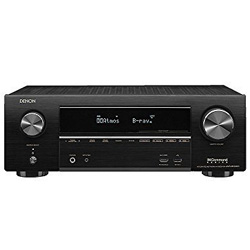 OLD MODEL
OLD MODELDenon AVR-X1500H
- Denon
- 23
-
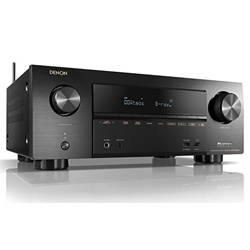 OLD MODEL
OLD MODELDenon AVR-X2500H
- Denon
- 7
-
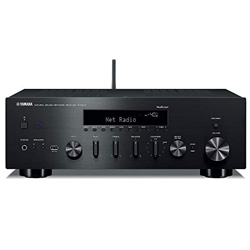 OLD MODEL
OLD MODELYamaha R-N602
- Yamaha
- 27
-
 OLD MODEL
OLD MODELMarantz NR1504
- Marantz
- 110
-
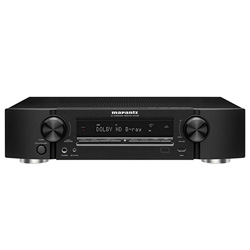 OLD MODEL
OLD MODELMarantz NR1403
- Marantz
- 176
-
 OLD MODEL
OLD MODELPioneer VSX-832
- Pioneer
- 184
-
 OLD MODEL
OLD MODELDenon AVRX4300H
- Denon
- 138
-
 OLD MODEL
OLD MODELPioneer VSX-S520
- Pioneer
- 92
-
 OLD MODEL
OLD MODELPioneer VSX-LX301
- Pioneer
- 97
-
 OLD MODEL
OLD MODELMarantz SR6012
- Marantz
- 34
-
 OLD MODEL
OLD MODELMarantz SR6010
- Marantz
- 36
-
 OLD MODEL
OLD MODELMarantz SR5010
- Marantz
- 63
-
 OLD MODEL
OLD MODELOnkyo TX-RZ720
- Onkyo
- 79
-
 OLD MODEL
OLD MODELSony STR-DN1060
- Sony
- 168
-
 OLD MODEL
OLD MODELMarantz SR5011
- Marantz
- 39
-
 OLD MODEL
OLD MODELHarman Kardon AVR 1610
- Harman Kardon
- 64
-
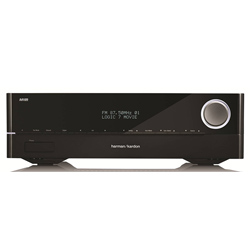 OLD MODEL
OLD MODELHarman Kardon AVR 1510
- Harman Kardon
- 75
-
 OLD MODEL
OLD MODELOnkyo TX-RZ1100
- Onkyo
- 17
-
 OLD MODEL
OLD MODELMarantz SR5012
- Marantz
- 48
-
 OLD MODEL
OLD MODELDenon AVR-X3200W
- Denon
- 98
-
 OLD MODEL
OLD MODELPioneer SC-LX502
- Pioneer
- 13
-
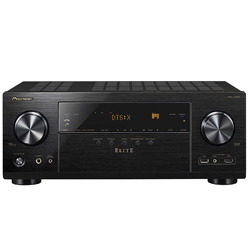 OLD MODEL
OLD MODELPioneer VSX-LX302
- Pioneer
- 44
-
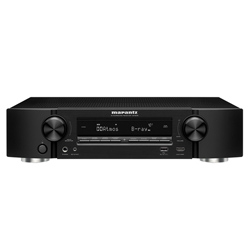 OLD MODEL
OLD MODELMarantz NR1606
- Marantz
- 50
-
 OLD MODEL
OLD MODELMarantz SR7011
- Marantz
- 51
-
 OLD MODEL
OLD MODELOnkyo TX-RZ810
- Onkyo
- 181
-
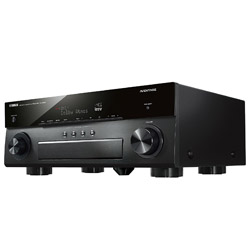 OLD MODEL
OLD MODELYamaha RX-A870BL
- Yamaha
- 32
-
 OLD MODEL
OLD MODELYamaha RX-A770BL
- Yamaha
- 48
-
 OLD MODEL
OLD MODELDenon AVR-X2300W
- Denon
- 175
-
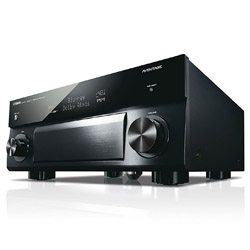 OLD MODEL
OLD MODELYamaha RX-A1070BL
- Yamaha
- 40
-
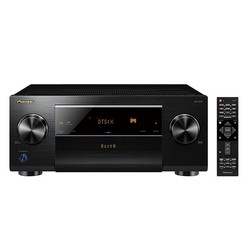 OLD MODEL
OLD MODELPioneer SC-LX701
- Pioneer
- 98
-
 OLD MODEL
OLD MODELPioneer SC-LX901
- Pioneer
- 90
-
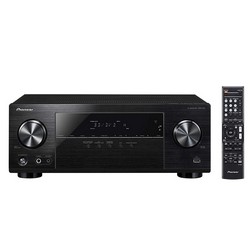 OLD MODEL
OLD MODELPioneer VSX-531
- Pioneer
- 144
-
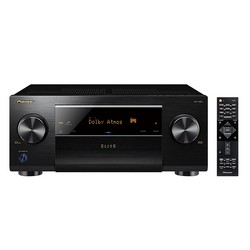 OLD MODEL
OLD MODELPioneer SC-LX501
- Pioneer
- 97
-
 OLD MODEL
OLD MODELPioneer VSX-1131
- Pioneer
- 237
-
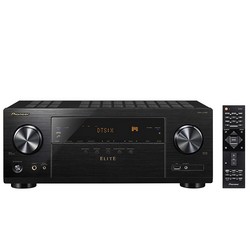 OLD MODEL
OLD MODELPioneer VSX-LX102
- Pioneer
- 54
-
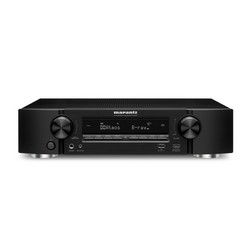 OLD MODEL
OLD MODELMarantz NR1607
- Marantz
- 61
-
 OLD MODEL
OLD MODELMarantz SR6011
- Marantz
- 28
-
 OLD MODEL
OLD MODELMarantz NR1508
- Marantz
- 48
-
 OLD MODEL
OLD MODELYamaha RX-V483BL
- Yamaha
- 214
-
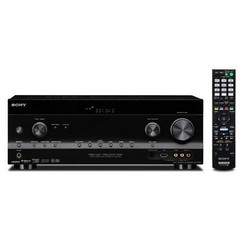 OLD MODEL
OLD MODELSTR-DH830
- Sony
- 62
-
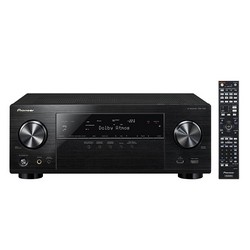 OLD MODEL
OLD MODELPioneer VSX-1130-K
- Pioneer
- 117
-
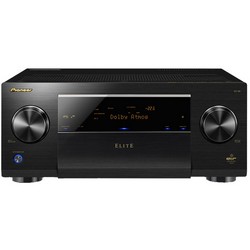 OLD MODEL
OLD MODELPioneer Elite SC-99
- Pioneer
- 14
-
 OLD MODEL
OLD MODELPioneer Elite SC-87
- Pioneer
- 67
-
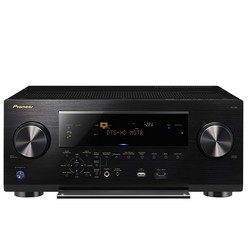 OLD MODEL
OLD MODELPioneer Elite SC-85
- Pioneer
- 67
-
 OLD MODEL
OLD MODELOnkyo TX-RZ610
- Onkyo
- 61
-
 OLD MODEL
OLD MODELOnkyo TX-NR757
- Onkyo
- 98
-
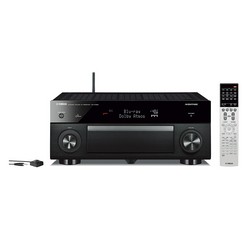 OLD MODEL
OLD MODELYamaha RX-A1050
- Yamaha
- 58
-
 OLD MODEL
OLD MODELYamaha RX-A3070BL
- Yamaha
- 53
-
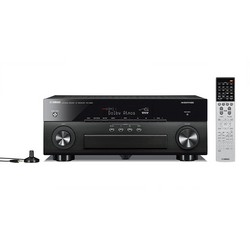 OLD MODEL
OLD MODELYamaha RX-A860BL
- Yamaha
- 32
-
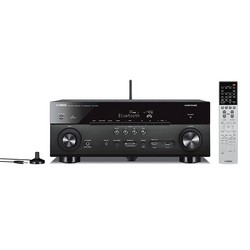 OLD MODEL
OLD MODELYamaha RX-A750
- Yamaha
- 26
-
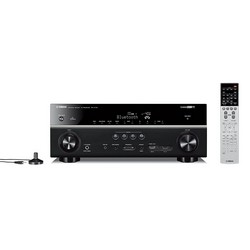 OLD MODEL
OLD MODELYamaha RX-V779BL
- Yamaha
- 20
-
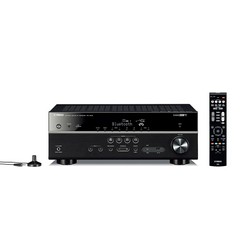 OLD MODEL
OLD MODELYamaha RX-V579BL
- Yamaha
- 19
-
 OLD MODEL
OLD MODELYamaha RX-A2060
- Yamaha
- 35
-
 OLD MODEL
OLD MODELYamaha RX-V581
- Yamaha
- 83
-
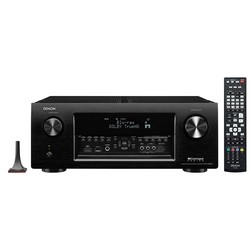 OLD MODEL
OLD MODELDenon AVR-X4000
- Denon
- 131
-
 OLD MODEL
OLD MODELDenon AVR-S930H
- Denon
- 187
-
 OLD MODEL
OLD MODELDenon AVR-X2400H
- Denon
- 116
-
 OLD MODEL
OLD MODELDenon AVRS730H
- Denon
- 169
-
 OLD MODEL
OLD MODELOnkyo TX-SR444
- Onkyo
- 65
-
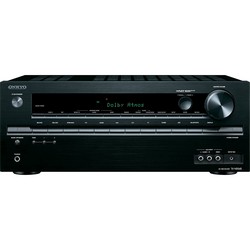 OLD MODEL
OLD MODELOnkyo TX-NR545
- Onkyo
- 99
-
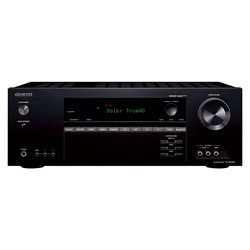 OLD MODEL
OLD MODELOnkyo TX-SR343
- Onkyo
- 100
-
 OLD MODEL
OLD MODELOnkyo TX-RZ710
- Onkyo
- 75
-
 OLD MODEL
OLD MODELPioneer SC-LX801
- Pioneer
- 110
What is an AV receiver?
The AV receiver is not the easiest device to buy and before buying, you need to compare receivers from different manufacturers. Since it controls the audio and video of your home theater system, there are many features to consider. It is one of the main elements of your installation. This device acts as a switch and a processor that processes and converts external video or audio signals
A good home theater receiver with good speakers is the best choice to recreate the atmosphere of a home theater. Moreover, the answer to the question "how to choose a receiver?" lies on the surface because there are devices for every taste and budget, and there are also excellent devices in all price categories.
How much power do you need?
AV receivers need to power many speakers. Powering all of all necessary speakers simultaneously requires a huge electrical power.
The power of a receiver is expressed in Watt and this is one of the main characteristics to compare av receivers side by side. It is generally understood for the majority of consumer models between 250 and 1200 watt. However, most receivers offer power between 5x70 and 5x110 watts, or more than 500 watts in total. The most common devices with a total power of 1000 watts.
How many channels do you need?
It is the most important element to take into account in AV receiver comparisons. Simply put, this is the number of speakers in addition to your subwoofer and your amplifier: 2, 5, 7, 9 or even 11.
- The 2.1 system will give you better sound than TV sound alone. However, it will offer less good surround sound than 5.1.
- The 5.1 system has become the standard today because it provides quality sound and a surround soundstage. 2 speakers at the front on the sides of the TV, 1 center speaker for the voices and 2 speakers at the back to fully immerse yourself in reproducing the acoustic effects.
- The 7.1 system allows even greater immersion and is appreciated by cinema lovers because it provides 2 additional speakers placed on the sides of the TV.
- The 9.2 system is a configuration allows you to control sound from all sides (using front high-frequency and surround back speakers in addition to the usual 5.1 configurations) to create a surround sound field.
- The 11.2 system creates a seamless sound field in Dolby Atmos or DTS: X formats from various speaker sets - up to 7.2.4 channels.
What kinds of inputs and outputs do you need?
If the vast majority of video elements connect today via HDMI, there are several versions of this connection that should be mentioned in an AV receiver buying guide.
- HDMI 1.3/1.4: This version of HDMI allows Full HD images to pass through, a 3D stream, as well as High Definition soundtracks.
- HDMI 2.0: This is essential for transmitting images in UHD, as well as HDR images. An amplifier without HDMI 2.0 connector will be limited to Full HD and deprived of HDR.
With the development of modern computer technology, multimedia systems, and network standards, many of the receivers are equipped with USB ports, Wi-Fi adapters, and even Internet functions. Therefore, in modern models, you can find the ability to connect MP3-players, read media files via USB port, work with web radio, and also support Bluetooth-audio and wireless technology for transmitting AirPlay audio. Also in the home theater receiver buying guide pay attention to a DLNA client that can play files from resources on a local computer network.
Make sure your AV receiver is ready for your TV
To keep up with current TVs, your AV receiver needs to be capable of switching 4K signals. 4K is the current best-possible, highest resolution video format for consumer video at home which is highly detailed.
Another feature to look out for HDCP 2.2 support. HDCP 2.2 is the newest and latest copy-protection tech.
And with a 7-channel AV receiver, you can use 5 channels for surround sound and 2 channels for stereo speakers in another room.
Also with dual HDMI outputs, you can watch one video content on two different screens in the same room or in different rooms or with an independent HDMI output for the second zone, you can watch two different video sources on different TVs.
Some AV receivers can stream music to different speakers in different rooms. Most Yamaha receivers work with MusicCast. Some Denon and Marantz receivers integrate with Denon's HEOS wireless speaker line.
When should I upgrade my AV Receiver
Do not upgrade your A/V receiver simply to keep up with trends or because you need the latest network features.. In our opinion, as a rule, it is better to buy a receiver of a higher model and spend a few more dollars on it, since you are likely to get more benefit from it before updating it again. Choose the best model now so you don’t look at the new model with minor changes next year.
Popular receiver comparisons
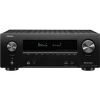
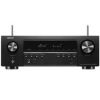

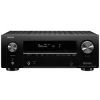
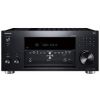
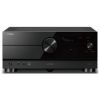
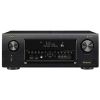
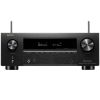
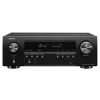
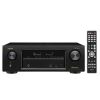
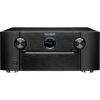

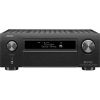
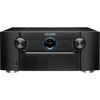
Recent reviews
